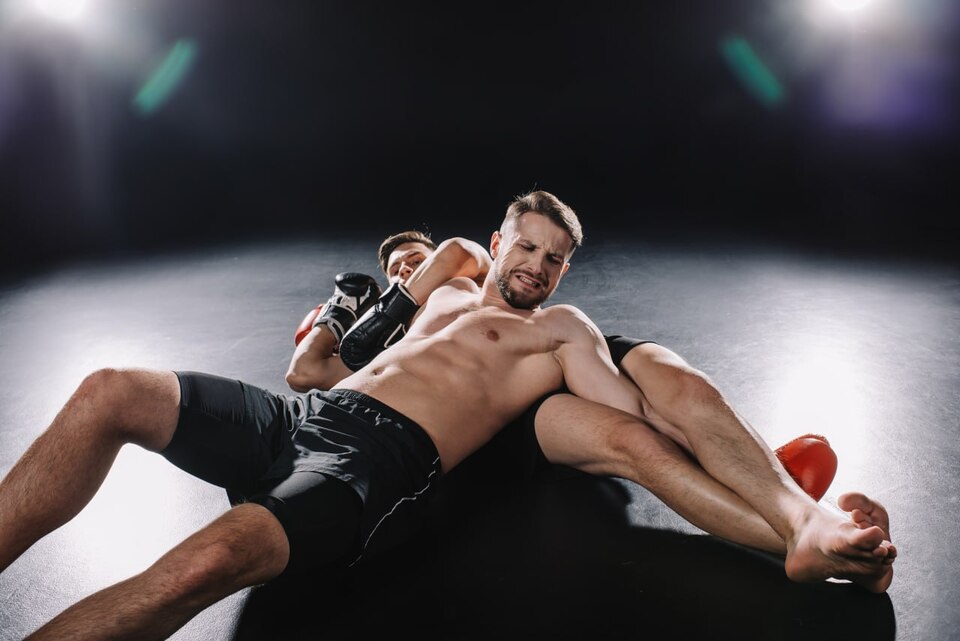Professional wrestlers are not just entertainers, they are elite athletes who need to maintain excellent physical fitness to perform their demanding tasks. A professional wrestler’s training regimen is intense and varied, combining strength, agility, and cardiovascular training to create a spectacle that requires both physical effort and visual appeal.
Strength Training
Muscle strength and endurance are fundamental for wrestlers, allowing them to execute complex moves and endure lengthy matches. Wrestlers often engage in a mix of traditional and functional strength training exercises to build the necessary muscle mass and power.
Compound Movements
Exercises like squats, deadlifts, and bench presses are staples in a wrestler’s routine. These movements work multiple muscle groups and are crucial for building the foundational strength required in wrestling.
Bodyweight Training
Push-ups, pull-ups, and dips are frequently utilized to improve body control and increase relative strength, which is essential for maneuvering both their body and that of their opponent’s during a match.
Cardiovascular Conditioning
Wrestling matches can be long and physically taxing, requiring high levels of stamina. Cardiovascular conditioning is therefore a critical component of a wrestler’s training regimen.
- High-Intensity Interval Training (HIIT): This type of training involves short bursts of intense exercise followed by a brief period of rest or lower-intensity activity. HIIT is effective for improving endurance and burning fat without the muscle loss often associated with long-duration cardio.
- Circuit Training: Combining strength exercises with aerobic activities, circuit training helps wrestlers maintain their heart rate at a high level throughout the workout, enhancing both strength and cardiovascular endurance.
Agility and Flexibility Training
Agility and flexibility are vital for wrestlers to execute quick, high-flying moves and avoid injuries. These athletes regularly practice drills that enhance their speed, coordination, and flexibility.
- Plyometrics: Exercises like box jumps and lunge jumps increase explosive power and speed.
- Yoga and Stretching: Regular yoga sessions and stretching routines help improve flexibility, reduce the risk of injuries, and aid in recovery.
Technical Skills and Ring Psychology
Wrestlers spend a considerable amount of time perfecting their technical skills, which include grappling, striking, and defensive maneuvers. Additionally, understanding ring psychology—how to engage and entertain an audience—is crucial and is often integrated into training sessions.
- Sparring and Choreography
Practicing with other wrestlers helps to refine technique and timing. These sessions often include rehearsing specific sequences to ensure that movements look fluid and impactful during actual matches. - Promo Training
ҐWrestlers also work on their mic skills, as charismatic dialogue delivery is essential for building a character and engaging with the audience.
Diet and Nutrition
Maintaining a wrestler’s physique requires careful attention to diet and nutrition. High protein intake is necessary for muscle repair and growth, while carbohydrates are important for fueling intensive workouts.
Balanced Meals
A typical wrestler’s diet includes lean proteins, complex carbohydrates, and healthy fats, spread out over multiple meals throughout the day to optimize metabolism and recovery.
Supplements
Many wrestlers also incorporate supplements such as whey protein, BCAAs (branched-chain amino acids), and creatine to support muscle recovery and energy levels.
Recovery Techniques
Recovery is just as important as the workouts themselves, allowing the body to heal and strengthen.
- Rest Days: Adequate rest is crucial, and wrestlers often have scheduled rest days to allow their bodies to recover.
- Physical Therapy and Massage: Many wrestlers undergo regular physical therapy and massage sessions to prevent injuries and promote muscle recovery.
Discipline is a Key
Professional wrestling requires a multi-faceted approach to training that includes strength, endurance, agility and performance skills. The intensity and variety of training reflects the demanding nature of their profession, requiring not only fitness, but also endurance and versatile skill.
Through rigorous training and a strict dietary regimen, wrestlers are prepared for the physical demands that are central to every match, ensuring that they can safely and effectively mesmerize the audience, match after match.
